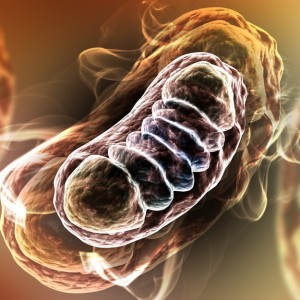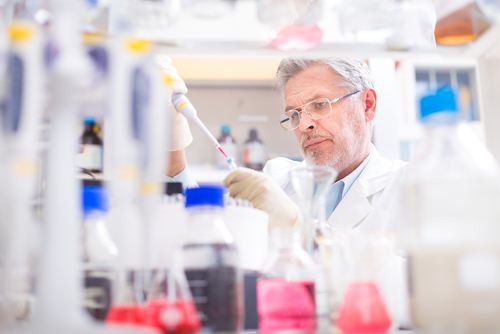 Mitochondria consist of small structures having evolved from bacteria engulfed by cells. This bacterial origin explains why mitochondria has its own genetic material (mitochondrial DNA, mtDNA) distinct from the nuclear DNA (nDNA). Most mitochondrial genes were transferred to the nucleus over time, but mtDNA still codes for 13 different proteins.
Mitochondria consist of small structures having evolved from bacteria engulfed by cells. This bacterial origin explains why mitochondria has its own genetic material (mitochondrial DNA, mtDNA) distinct from the nuclear DNA (nDNA). Most mitochondrial genes were transferred to the nucleus over time, but mtDNA still codes for 13 different proteins.
Though mitochondria are involved vital processes such as cell death, calcium homeostasis and fatty acid degradation, its most important function is the generation of adenosine triphosphate (ATP), the source of cellular energy. Maintenance of mtDNA integrity is therefore essential to cell survival and overall health of the organism. This subject is discussed in a manuscript entitled “Quality matters: how does mitochondrial network dynamics and quality control impact on mtDNA integrity?” published in Philosophical Transactions B.
Each cell contains hundreds of mitochondria and thousands of mtDNA copies varying accordingly to cell type: red blood cells have no mitochondria while liver cells have around 2000. mtDNA damage by mutation or deletion may impact on the cellular energy supplies causing severe myopathies and neuromuscular disease, and several neurologic disorders. Healthy mtDNA may coexist together with mutant mtDNA, a phenomenon called heteroplasmy. A high percentage of heteroplasmy is associated with high levels of mutant mtDNA and may cause several pathologies. Cells have evolved ways (mitophagy, for instance) to eliminate damaged mitochondrial but mtDNA mutations may evade mitochondrial quality control and even accumulate with aging. Some theoretical models try to explain how mutated mtDNA molecules predominate in individual cells over time, a process termed clonal expansion.
Live-cell imaging and super-resolution microscopy revealed an even higher level of complexity in mitochondrial dynamics: mtDNA is organized in protein-DNA complexes called nucleoids appearing as discrete clusters or foci inside the mitochondrial network — often containing just one copy of mtDNA. These nucleoids act as entities able to locally control mitochondrial function. The localization, dynamics and protein composition of mitochondrial DNA nucleoids elucidation is only starting.
These findings will fully contribute to understanding the processes underlying mitochondrial quality control and transmission of mutated mtDNA in disease and aging. Future studies should give a high priority to this field of research aiming to further understand and prevent mitochondrial diseases.

